|
|
The Resources section consists of pages for Aquariums, Museums, Organizations, Programs.
Aquariums - US and Possessions
| Aquariums |
Notes |
| Alabama | . |
Estuarium
Dauphin Island
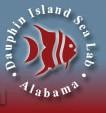
|
The Dauphin Island Sea Lab (DISL) was founded in 1971 by the State Legislature. It is located on the eastern tip of Dauphin Island, a barrier island in the Gulf of Mexico. The DISL is surrounded by Mobile Bay, Mississippi Sound and the waters of the Gulf, making it perfectly situated for a wide range of marine science activity. In addition, it is also a public aquarium.
|
| Arkansas | . |
National Park Aquarium
Hot Springs, AR |
This aquarium does not have a website. |
| California | . |
Aquarium of the Bay
San Francisco
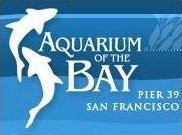
|
The Aquarium of the Bay was opened in 1996 and enhanced in 2001. It is devoted to the rich and diverse aquatic life of the San Francisco Bay and its surrounding waters. There are 4 parts to the aquarium:
Discover the bay
Under the bay
Touch the bay
Save the bay |
Aquarium of the Pacific
Long Beach
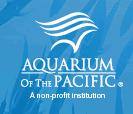
|
The Aquarium of the Pacific in Long Beach, California features more than 12,500 animals as you "explore sunny Southern California and Baja, the frigid waters of the North Pacific, and the colorful reefs of the Tropical Pacific."
Construction began in 1995 and the 156,735 square foot aquarium opened in 1998. Since the aquarium is built on a site created through land reclamation in an area prone to earthquakes, the facility is built on top of 1,800 cement pilings which each extend 85 feet into the ground and are surrounded by gravel.
|
Birch Aquarium at Scripps
La Jolla

|
This aquarium is located at the University of California, San Diego. It is described as the "public exploration center" for the Scripps Institution of Oceanography (SIO). The first building dedicated to the aquarium was built in 1915. The aquarium moved across La Jolla Shores Drive and up the bluff overlooking SIO to its present site in 1992.
|
Cabrillo Marine Aquarium
San Pedro
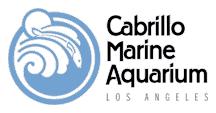
|
The website has no information on when this aquarium was founded.
|
Monterey Bay Aquarium
Monterey

View their Complete timeline
|
In 1914, Frank Booth, the "Father of Cannery Row," proposed a $10,000 aquarium to the Monterey City Council. In 1925, Knut Hovden, builder of Hovden's Cannery, sponsored a bond issue to put an aquarium in the basement of the Pacific Grove Museum. In 1944, Dr. Lawrence R. Blinks of Hopkins Marine Station suggested an aquarium at Point Lobos State Reserve. None of these ideas ever came to fruition.
In April, 1978, a group of marine scientists, local residents and members of the David and Lucile Packard Foundation of Los Altos, California, formed the Monterey Bay Aquarium Foundation to pursue the project. Initial construction costs, which ultimately totaled $55 million, were provided through a one-time personal gift from David and Lucile Packard, with the intention that the non-profit aquarium should be self-sustaining when open to the public in 1984.
In April 1980, Hovden Cannery, built in 1916 -- the largest on Cannery Row and the last one to close (in 1973) after the sardine fishery collapsed, was dismantled to make way for aquarium construction.
Construction on the aquarium began in March 1981, after two years of design work by the architectural firm Esherick Homsey Dodge and Davis. Architect Charles M. Davis said that the new building will reflect "the nature of Cannery Row itself—seemingly chaotic, a hodge-podge of roofs."
In August 1984, a charter membership mailing is sent to residents of the Monterey Peninsula. By the summer of 1985, 45% of Peninsula residents have joined the aquarium. By October 1985, more than 107,000 people are members—the largest membership of any aquarium in the world. They come from 48 states and 11 foreign countries.
The Aquarium opens on October 20, 1984.
|
Santa Monica Pier Aquarium
Santa Monica
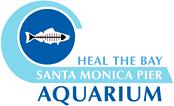
|
Since 2003, this aquarium has been known as the The Santa Monica Pier Aquarium (SMPA), operated by Heal the Bay, a nonprofit organization.
Prior to 2003, the aquarium was called the Ocean Discovery Center, and was operated by UCLA.
|
Steinhart Aquarium
San Francisco
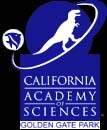
|
The California Academy of Sciences is one of the ten largest natural history museums in the world. It is located in Golden Gate Park in San Francisco. The Steinhart Aquarium and the Morrison Planetarium are housed within its walls. The Academy began life in 1853 as a learned society and still carries out a large amount of original research, though its main role is now public education. The Academy's main buildings in Golden Gate Park are closed for major refurbishment until 2008, though it has reopened in temporary accommodation at 875 Howard Street as of May 1, 2004.
Built in 1923, the Steinhart is the oldest continually operating aquarium in the United States and is home to more than 600 different species of aquatic animals, one of the most diverse collections in the world. See the flooded forests of the Amazon, the mudbanks of the Mississippi River and the reefs of Hawaii without ever leaving San Francisco.
|
| Colorado | . |
Denver's Downtown Aquarium
Colorado

|
Colorado's Ocean Journey was founded by Bill Fleming and Judy Petersen Fleming as a nonprofit entity. It was partially funded by a $57 million dollar bond loan as well as loans by the department of Housing and Urban Development, and its total cost was $93 million. The facility opened June 21, 1999 and soon earned accreditation by the Association of Zoos and Aquariums (AZA).
Although initial attendance was high, the number of visitors fell drastically within a few months, and the aquarium failed to meet its attendance projections of over a million visitors per year, in part because of a downturn in the U.S. economy. The aquarium was not able to make payments on its high construction debt, and Colorado Ocean Journey Liquidation Inc. filed bankruptcy April of 2002 with a $62.5 million debt. After a last-minute bidding war with Ripley's Entertainment, Landry's Restaurants, Inc. purchased the facility in March 2003 for $13.6 million.
After the purchase, the facility remained open to the public until the summer of 2005, when it closed briefly for renovations. These included the addition of a full-service restaurant, bar, and ballroom. A 200,000 gallon (750,000 L) marine aquarium was added to the restaurant area. Upon its reopening July 14, 2005, the facility was renamed Denver's Downtown Aquarium.
Denver's Downtown Aquarium is a public aquarium located in Denver, Colorado at the intersection of I-25 and 23rd Ave. The 107,000 square foot (9940 m²) main building sits on a 17 acre (69,000 m²) piece of land adjacent to the South Platte River. Its freshwater and marine aquaria total approximately 1,200,000 gallons (4,500,000 liters), and exhibit a variety of fish and other animals. It is the largest aquarium between Chicago and California.
|
| Connecticut | . |
Maritime Aquarium at Norwalk
Norwalk

|
The "Maritime Center" opened July 16, 1988. The name was changed to the "Maritime Aquarium" in 1996 to stress the live animals featured there. Annual attendance averages 525,000 visitors. The Maritime Aquaurium contributes approximately $20 million to Norwalk's economy every year; the state-wide impact is almost $42 million.
The Maritime Aquarium at Norwalk is located in Norwalk, Connecticut (in the SoNo neighborhood). It features many species of fish, mainly from Long Island Sound. There are harbor seals, otters, jellyfish, cultural exhibits, touch tanks, Loggerhead turtles, and one of the most popular attractions, the large shark tank. The aquarium also has a gift shop and an IMAX theater. The aquarium regularly houses temporary exhibits on diverse topics such as dinosaurs or microbes.
The cultural section of the aquarium explores boat building and human exploration of the sea.
|
Mystic Aquarium & Institute for Exploration
Mystic
 |
Mystic Aquarium, a nonprofit marine science center, opened in 1973 as a privately owned corporation. Mr. Kelvin Smith, Cleveland, Ohio, industrialist and philanthropist, was principal shareholder. Smith, a chemist by training, had a strong interest in marine biology and saw aquariums as a showcase for both marine life and artificial seawater technology.
He chose Mystic, Connecticut, as the site for Mystic Aquarium because of the area’s scenic shoreline and rich maritime history.
In the spring of 1999, Mystic Aquarium and Dr. Robert Ballard’s Institute for Exploration joined forces with the grand opening of a $52 million expansion. The expansion featured, among other things, the Alaskan Coast, a one–acre outdoor beluga whale display, and a unique exhibit center focused on presenting learning, artifacts and the methods used by Institute for Exploration in deep sea exploration.
|
| Florida | . |
Florida Aquarium
Tampa

|
In April 1986, a market feasibility study was contracted and the architectural committee for the project moved forward to address building and space requirements.
In August 1986, the board went public with plans for the project and conducted briefings with local and state officials, garnering broad-based support for the project, from the local Chambers of Commerce to then Governor Bob Graham. Before the end of 1986, a series of meetings were held between The Florida Aquarium Board and representatives of Tampa’s Harbour Island, and the Cities of Tampa, St. Petersburg and Tarpon Springs. Over the next several years, location and financing were addressed and the pieces of the site and financing puzzle fell into place.
The City of Tampa agreed to issue and guarantee an $84 million bond issue to be repaid by Aquarium revenues. Garrison Seaport Center emerged as a major redevelopment of downtown Tampa’s waterfront. On April 23, 1992 The Tampa City Council voted to accept the financing package, and on May 7, 1992 site work for the new Florida Aquarium began. During the next three years of construction, educational outreach programs were held throughout the community.
On March 31, 1995, the new Florida Aquarium opened its doors to the public, serving one million residents of and visitors to the Tampa Bay area and bringing a positive economic impact of $60 million to the community in its first year of operation. In October 1996, the City of Tampa acquired the Aquarium facility and assumed obligation for the bonds, making this project a public/private partnership effort.
In March 1997, the American Zoo and Aquarium Association accredited The Florida Aquarium.
|
The Seas with Nemo & Friends
Disney World
Orlando

|
What is now called "The Seas with Nemo and Friends Pavilion" originally opened to the public in 1986 as "The Living Seas" in Future World at Epcot in Walt Disney World, Lake Buena Vista, Florida. It was the largest man-made underwater environment in the world at its completion (since surpassed by the Georgia Aquarium), a marvel of engineering creating the single largest salt water tank ever built.
The concept of the building was to take visitors under the ocean to 'Sea Base Alpha'. Visitors would watch a short movie then take a simulated elevator ride to the ocean floor via a 'Hydrolator.' Guests then would ride the Caribbean Coral Reef Ride in a "seacab" along an underwater tunnel through the aquarium. From there guests would ride around 'Sea Base Alpha' getting an up-close view of the marine life. They would then disembark into the main exhibit area where they could interact with various multimedia displays.
|
The Pier Aquarium
St. Petersburg

|
The Pier Aquarium is an intimate 2,000 sq. ft. aquarium and marine education center established in 1988 as a not-for-profit organization in downtown St. Petersburg, Florida.
Founding sponsors, which included the University of South Florida College of Marine Science, the National Marine Fisheries Services, Florida Sea Grant, Pinellas County Schools, Florida Progress, Inc., St. Petersburg Times and Chase Bank of Florida, saw the Aquarium as a testament to the numerous nationally recognized marine research institutions located in the city. It would be a unique resource for public education with the laboratory, Tampa Bay, right outside the building doors.
The Aquarium’s uniquely trained Scientific Staff – students from local colleges and universities – translates the scientific information on the oceans, aquatic animals, conservation and up-to-date environmental issues to Tampa Bay area students, teachers, residents and visitors to make learning a more personal, entertaining experience. They also have a “Fresh Fish Theater.”
|
The Key West Aquarium
Key West

|
During the Great Depression, Key West had turned over its charter to the federal government due to the economic disaster that had hit the island. The federal government believed Key West, with its great weather and location, would make a wonderful tourist destination. The Works Project Administration (WPA) was sent in and built the Key West Aquarium between 1932-1934. The Aquarium was originally an open air aquarium, one of the first and largest at the time. Today, it is nearly twice the size of the original with the addition of the Atlantic Shores exhibit and the large outdoor holding pens.
|
| Georgia | . |
Georgia Aquarium
Atlanta

|
The Georgia Aquarium opened on November 21, 2005 to annual pass holders and then on November 23, 2005 to the general public. At $24.00 per adult, the price of admission to the non-profit aquarium is among the most expensive in the country. The aquarium has nevertheless far exceeded visitor expectations, welcoming its millionth guest on March 1, 2006, only ninety-eight days after opening.
The aquarium sold over 290,000 annual passes for its first year, before sales were halted (to avoid a "private club" atmosphere, according to Aquarium Executive Director Jeff Swanagan).[1] The Georgia Aquarium welcomed its three millionth guest on August 24, 2006.
Located in Atlanta, Georgia at Pemberton Place, it is billed as the "world's largest aquarium" with more than 8 million US gallons of marine and fresh water, and more than 100,000 animals of 500 different species.
It was funded mostly by a $250 million donation from Home Depot founder Bernie Marcus, and built on a 20 acre site north of Centennial Olympic Park in downtown Atlanta. Marcus credited his 60th birthday dinner at the Monterey Bay Aquarium in 1990 as among the inspirations behind his desire to build an aquarium in Atlanta.
|
Flint RiverQuarium
Albany

|
The RiverQuarium was opened in 2004. It features both freshwater and saltwater river ecosystems of Southwest Georgia as well as the world. In the center of the aquarium is the "Blue Hole Spring," an open-air, 175,000 gallon, and 22 ft. deep tank filled by a natural spring below. It exhibits the diverse life forms of the Flint River, which runs through Southwest Georgia.
|
| Guam | . |
Underwater World
Tumon

|
In 1999 AquariumTeam (USAT) completed construction of its third Aquarium Complex, including a full scale bar and restaurant, at Louis Vuitton's newly completed Comete Guam Building in Guam. The Guam Project opened July 4, 1999 following an 11 month construction period. The complex was completed under budget and ahead of schedule.
Mr. Pedersen had earlier responsible for directing the teams that designed and developed UnderWater World® at PIER 39 in San Francisco and UnderWater World® at the Mall of America in Bloomington, Minnesota. These projects were developed concurrently, opening in April 1996 and June 1996 respectively. The PIER 39 project was constructed at a cost of approximately $41 million. Its first year attendance was over 800,000 visitors. The Mall of America project was constructed at a cost of approximately $25 million. Its first year attendance was 1.2 million visitors. USAT is no longer involved in the operation of the San Francisco or the Minnesota project.
|
| Hawaii | . |
Waikiki Aquarium
Waikiki
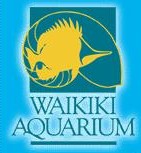
|
This aquarium was founded on March 19, 1904, by the Honolulu Rapid Transit Authority, a forerunner of the present-day Oahu Transit Services, Inc. It was hoped that the aquarium would entice travelers to ride the trolley all the way to the end of the line at Queen Kapiolani Park where the Aquarium is located. This aquarium is the third oldest public aquarium in the United States. Since 1919, it has been an institution of the University of Hawaii System.
Considered a state-of-the-art scientific institution at the time of its opening, William Jennings Bryan and Jack London traveled to Honolulu to see the Waikiki Aquarium. Renowned biologist David Starr Jordan proclaimed it to have the finest collection of fishes in the world.
Situated beside a living coral reef on the Waikiki shoreline, the Aquarium is home to more than 3,055 organisms of 464 species of marine plants and animals. Each year, over 350,000 people visit. It has been designated a Coastal Ecosystem Learning Center of the Coastal America Partnership federal program.
The aquarium live-fish gathering business in Hawaii has had a long, controversial history. In 1973, community worries over collecting actions were first handled by the Hawaii Division of Aquatic Resources by requiring monthly collection information. Increases in fish gathering united with growing public perception of a declining fish supply and ultimately developed into a harsh disagreement between fish collectors and the dive tour industry.
In reply to declines in reef fishes due to aquarium collectors, the Hawaiii State Legislature, in the course of Act 306, formed the West Hawaiii Regional Fishery Management Area in 1998 to advance management of fishery resources. The projected management plan received 93% support at a public hearing and was then approved by the Governor.
|
| Illinois | . |
Shedd Aquarium
Chicago
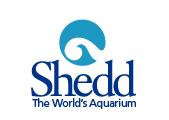
|
John G. Shedd Aquarium in Chicago in the United States was at one time the largest indoor aquarium in the world with 5 million gallons of water and 22,000 fish; it has since been eclipsed by the 8 million gallon Georgia Aquarium in Atlanta.
The aquarium is surrounded by Museum Campus Chicago, which it shares with Adler Planetarium and the Field Museum of Natural History.
This Aquarium was the gift of retail leader John G. Shedd, a protégé of Marshall Field (benefactor of the adjacent Field Museum), to the city of Chicago. Construction was completed on 19 December 1929; the first exhibits were opened in 1930. As one of the first inland aquariums in the world, Shedd had to rely on a custom-made railroad car, the Nautillus, for the transport of fish and seawater. The Nautillus lasted until 1959.
In 1933, Chicago hosted its second world's fair, the Century of Progress. The fair was held very close to the aquarium, so it gained exposure from a large international crowd. Among the collections added during the fair, a Queensland Lungfish known as "Granddad" is still alive and considered the oldest fish in a public aquarium.
In 1971, Shedd Aquarium added one of its most popular exhibits, a massive 90,000-gallon tank reproducing a Caribbean coral reef. That same year, the aquarium acquired its first research vessel, a 75-foot boat for exploring the Caribbean, manned by a diving crew to collect specimens. In 1985, this boat was replaced with the aquarium's current vessel, the Coral Reef II.
In 1991, Shedd opened its "Oceanarium", a large addition to the aquarium that features many marine mammals, including Pacific white-sided dolphins and belugas. The Beluga whale Kayavak was born in Shedd Aquarium on 3 August 1999. The aquarium also boasts a number of sea otters; the core of this collection was a group rescued from the Exxon Valdez oil spill in 1989.
The Shedd's newest permanent exhibit is "Wild Reef". Under construction from 2000 until its opening in 2003, "Wild Reef" attempts to recreate a Philippine coral reef and is based on the Apo Island Marine Reserve, complete with living coral, multiple species of fish and rays, and a collection of sharks. The main draw of this attraction is a 400,000 gallon shark tank with twelve foot high curved windows, allowing visitors a "divers-eye view".
The next phase of Shedd development revolves around its next capital campaign, beginning in 2007, that will raise funds for an expansion of the aquarium to the north, on the only slice of land in Shedd's unique geographic location that allows expansion. Since the aquarium has reached a natural cap in visitor attendance based on its current size, the aquarium must add new exhibit space to increase annual attendance in the future. The proposed expansion will be difficult, as it would require potential exhibit space to be built under the water table and Lake Michigan itself. This proposed expansion would include a new exhibit area, tentatively called "African Rivers", which would feature crocodile, hippopotamus, and other large African reptiles and mammals in addition to various African chiclids and other fish.
|
| Kentucky | . |
The Newport Aquarium
Newport
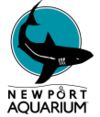
|
The Newport Aquarium, located in Newport, Kentucky, is billed as the "number one aquarium in the midwest" with 70 exhibits and 14 galleries, including five seamless acrylic tunnels totaling over 200 feet in length. The aquarium showcases thousands of animals from around the world in a million gallons of water, including the enormously popular "Sweet Pea," one of the only shark rays in the world. The facility is open to the public 365 days a year. Like its sister aquarium, Adventure Aquarium, on the Camden Waterfront, Camden, New Jersey, Newport Aquarium is an accredited member of the Association of Zoos and Aquariums a leader in global wildlife conservation. Located only two minutes from downtown Cincinnati, Ohio at Newport on the Levee.
|
| Louisiana | . |
Aquarium of the Americas
New Orleans

|
The Aquarium of the Americas, opened in 1990, is run by the Audubon Institute, which also supervises the Audubon Zoo and Audubon Park (in a different part of the city). The Aquarium is located along the banks of the Mississippi River by the edge of the historic French Quarter off Canal Street.
With 10,000 animals representing 530 species, exhibits include the Mississippi River gallery, featuring catfish, paddlefish, and alligators; a Caribbean reef exhibit featuring a clear, 30-foot-long tunnel surrounded by aquatic creatures; and a Gulf of Mexico exhibit featuring sharks, sea turtles, and stingrays. The Aquarium of the Americas also has an IMAX theater.
|
This page is under construction. Data on the aquariums below, and on all aquariums around the world, will be added shortly.
Maine
Gulf of Maine Aquarium - Portland
Maine Aquarium - Saco
Maryland
National Aquarium in Baltimore - Baltimore
Massachusetts
New England Aquarium - Boston
Michigan
Belle Isle Aquarium - Detroit, opened 1904 closed 2005
Minnesota
Great Lakes Aquarium - Duluth
Underwater Adventures Aquarium - Bloomington
Missouri
World Aquarium - St. Louis, Missouri
Nevada
Shark Reef - Las Vegas
New Mexico
Albuquerque Aquarium - Albuquerque
New York
Aquarium of Niagara - Niagara Falls
New York Aquarium - Brooklyn
North Carolina
North Carolina Aquarium at Fort Fisher - Kure Beach
North Carolina Aquarium on Roanoke Island - Roanoke Island
North Carolina Aquarium at Pine Knoll Shores - Pine Knoll Shores
Oklahoma
Oklahoma Aquarium - Tulsa
Oregon
Oregon Coast Aquarium - Newport
Pennsylvania
Philadelphia Aquarium - Philadelphia (1911-1962)
PPG Aquarium - Pittsburgh
South Carolina
Ripley's Aquarium - Myrtle Beach
South Carolina Aquarium - Charleston
Tennessee
Ripley's Aquarium of the Smokies - Gatlinburg
Tennessee Aquarium - Chattanooga
Texas
Moody Gardens Aquarium - Galveston
Houston Zoo Aquarium - Houston
Caldwell Zoo Aquarium - Tyler
Texas State Aquarium - Corpus Christi
Dallas World Aquarium - Dallas
Dallas Aquarium at Fair Park - Dallas
Virginia
Virginia Aquarium & Marine Science Center - Virginia Beach
Washington (State)
Seattle Aquarium - Seattle
Point Defiance Zoo & Aquarium - Tacoma
Washington D.C.
National Aquarium - Washington, D.C., oldest in U.S., opened 1873
|
|





















